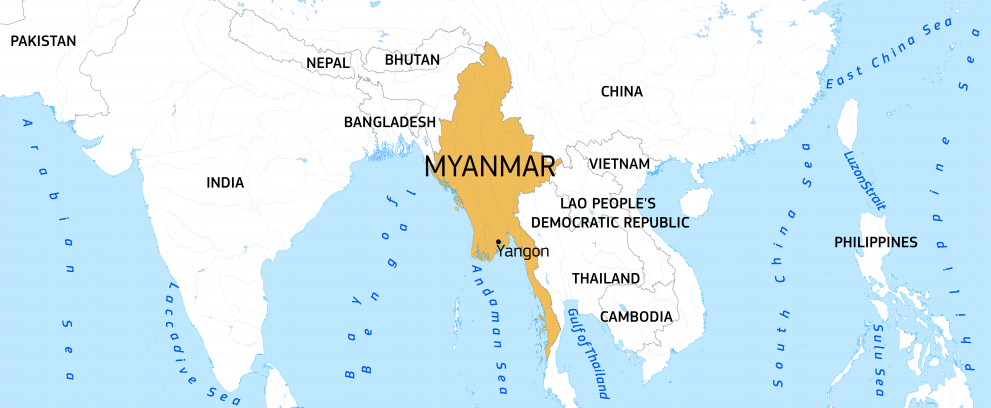Introduction
The already dire humanitarian situation in Myanmar has spiralled since the military takeover in 2021. The coup d’état against the democratically elected government plunged the country into political, social, and economic turmoil.
Fighting between opposition forces and the military has reached unprecedented levels across the country.
Amidst aerial attacks, ground attacks, and widespread violations of human rights and international humanitarian law, the civilian population of Myanmar is living in fear for their lives and their coping capacities are stretched to the limit.
Mass displacement continues at an alarming rate, with some 3.5 million people displaced as of December 2024, about 90% of whom have been displaced since February 2021.
What are the needs?
According to the United Nations, 19.9 million people, over a third of the population, need humanitarian assistance in Myanmar – compared to one million people before the military takeover in 2021.
This includes 6 million children who have limited or no access to healthcare and education, suffer from food insecurity and malnutrition, and face protection risks including forced recruitment, landmines, and mental distress.
The armed conflict continues to trigger displacement at an alarming rate. By December 2024, over 3.5 million people across the country had fled their homes.
Basic social services remain disrupted, and the country is suffering shortages of medical supplies and equipment, with the healthcare system in collapse. A quarter of the population is facing hunger.
In 2017, Myanmar security forces launched armed attacks and targeted violence on a massive scale against the Rohingya population of Rakhine State, forcing more than 745,000 people to flee across the border into neighbouring Bangladesh.
Meanwhile, some 600,000 Rohingya remain in Rakhine, 144,000 of whom have been confined to camps since 2012. They are deprived of basic rights, including citizenship, freedom of movement and access to resources and essential services.

How are we helping?
The EU has been providing humanitarian aid in Myanmar since 1994, with total funding reaching €456 million.
In 2025, the EU has so far allocated €46 million in humanitarian aid funding to address the immediate needs of the most vulnerable people in Myanmar, including displaced and conflict-affected communities.
The funding helps to provide food, nutrition, clean water and sanitation, shelter and emergency preparedness/response, healthcare, education in emergencies, as well as protection services, including mine risk education and victim assistance.
Humanitarian organisations in Myanmar continue to face major access constraints, bureaucratic impediments, and a repressive environment for aid workers, which hampers and slows down the effective delivery of humanitarian aid to people in need.
The EU does not channel any humanitarian funding via the military authorities. EU humanitarian aid is provided directly through thoroughly vetted humanitarian organisations across the country, wherever needs are biggest, in line with the humanitarian principles of humanity, neutrality, impartiality and independence. In Myanmar, EU partners work with more than a hundred local organisations to ensure aid is delivered even in hard-to-reach areas.
Myanmar is also one of the world’s most disaster-prone countries, exposed to multiple hazards, including floods, cyclones and earthquakes. The EU has responded to several emergencies in Myanmar, including cyclone Mocha in 2023 and Typhoon Yagi in 2024, and is funding disaster preparedness activities, which aim to increase the local populations’ capacity to withstand emergencies.
In an immediate response after the deadly 7.7 magnitude earthquake that has struck Myanmar and the broader region on 28 March, the EU released €2.5 million in initial emergency assistance with a focus on displaced and conflict-affected communities. The EU has also activated its Copernicus satellite service to facilitate impact assessment.
The EU has also launched a Humanitarian Air Bridge operation, with the first flight departed on 2 April from Copenhagen carrying 80 tonnes of EU owned supplies including tents, health and water and sanitation items among others.
Furthermore, following the activation of the EU Civil Protection Mechanism, a team of 12 European experts from Sweden, Finland, the Netherlands, Slovenia, Luxembourg and Norway has been deployed to Bangkok and Kuala Lumpur. Sweden and the Netherlands have also offered to deploy other experts to another request. The EU’s Emergency Response Coordination Centre has also deployed a liaison officer to Bangkok to ensure coordination with partners on the ground.
On 7 April, the European Commission allocated an additional €10 million in humanitarian aid to provide emergency shelter, medical care, clean water, and sanitation to affected communities, as well as family tracing and reunification amongst others.
The EU also released an additional €500,000 contributing to the International Federation of Red Cross and Red Crescent Societies (IFRC) emergency appeal.
Last updated: 07/04/2025
Facts & figures
19.9 million people require humanitarian assistance (Humanitarian Response Plan 2025)
Some 3.5 million internally displaced people
EU humanitarian funding:
€33 million initially allocated for 2025
over €46 million in 2025
over €456 million since 1994

